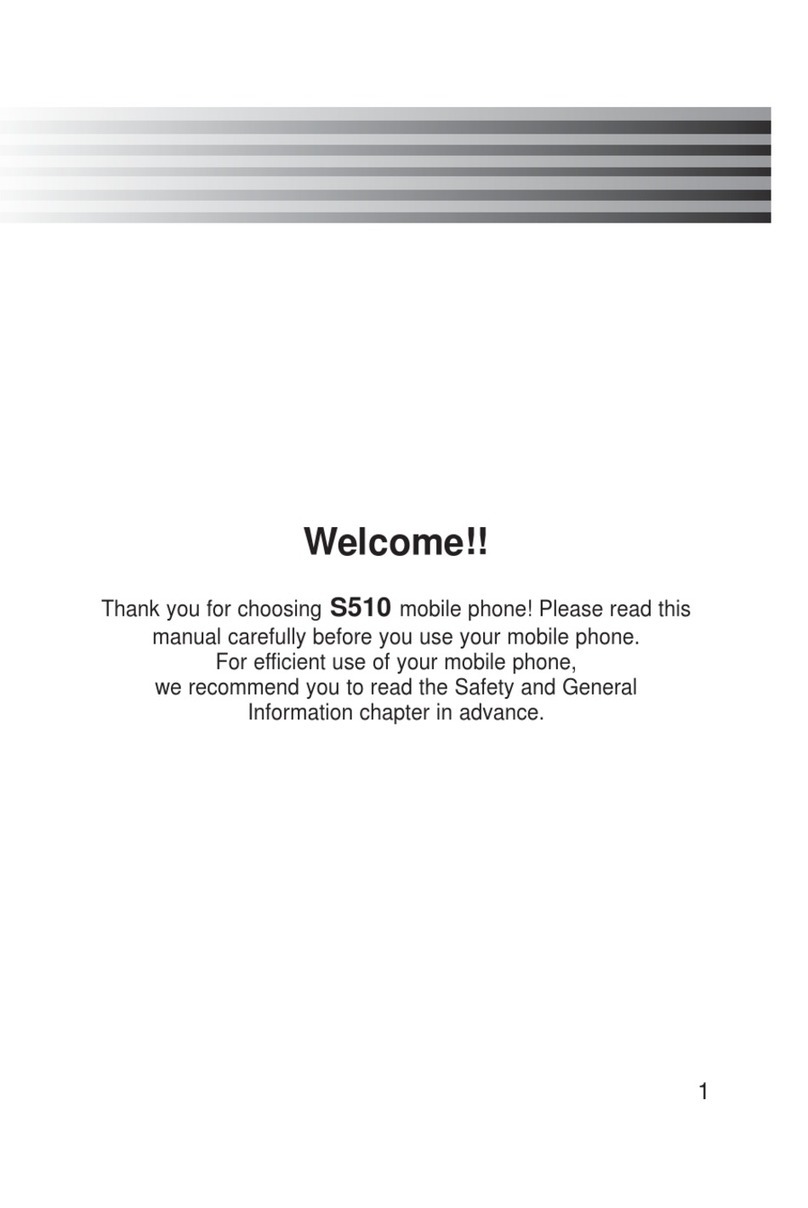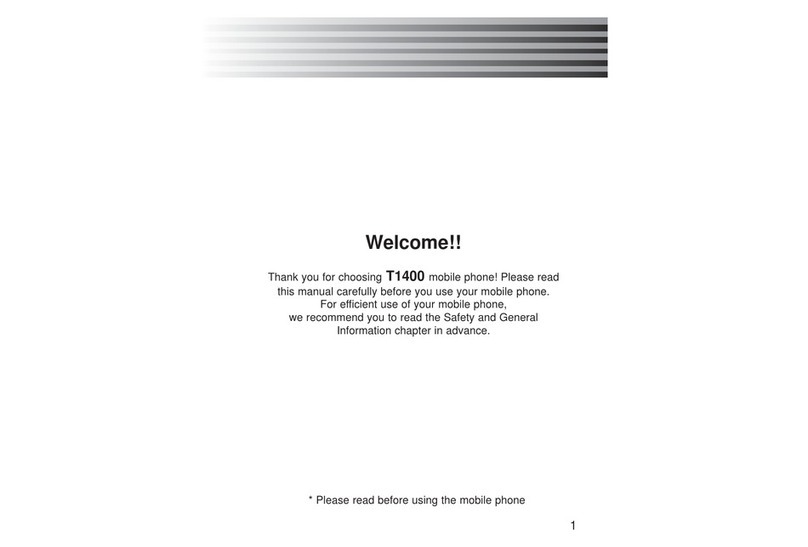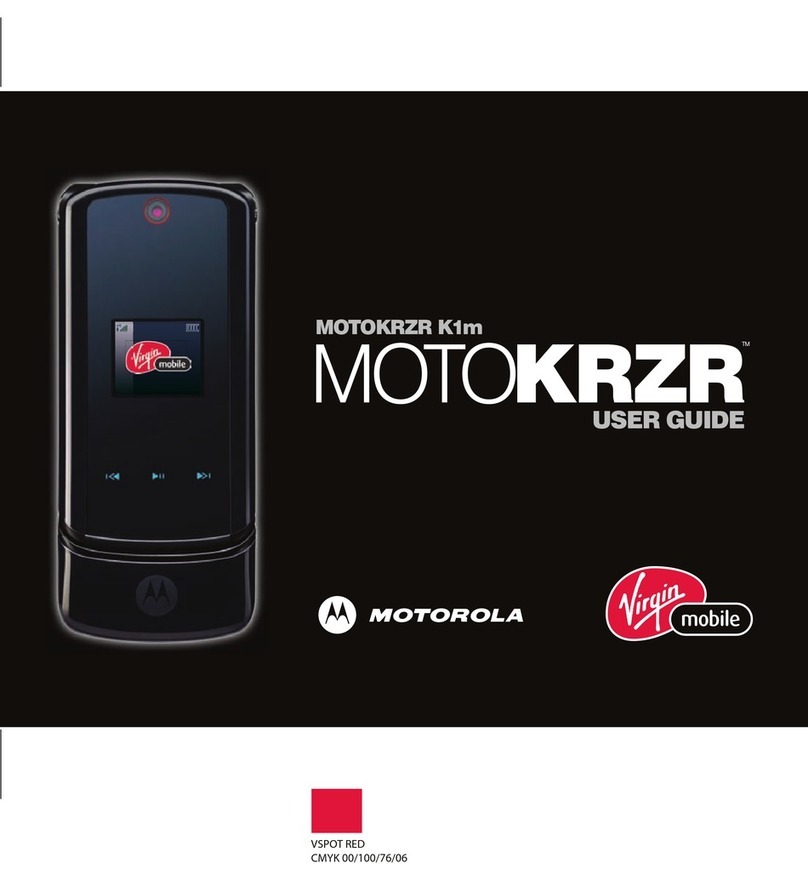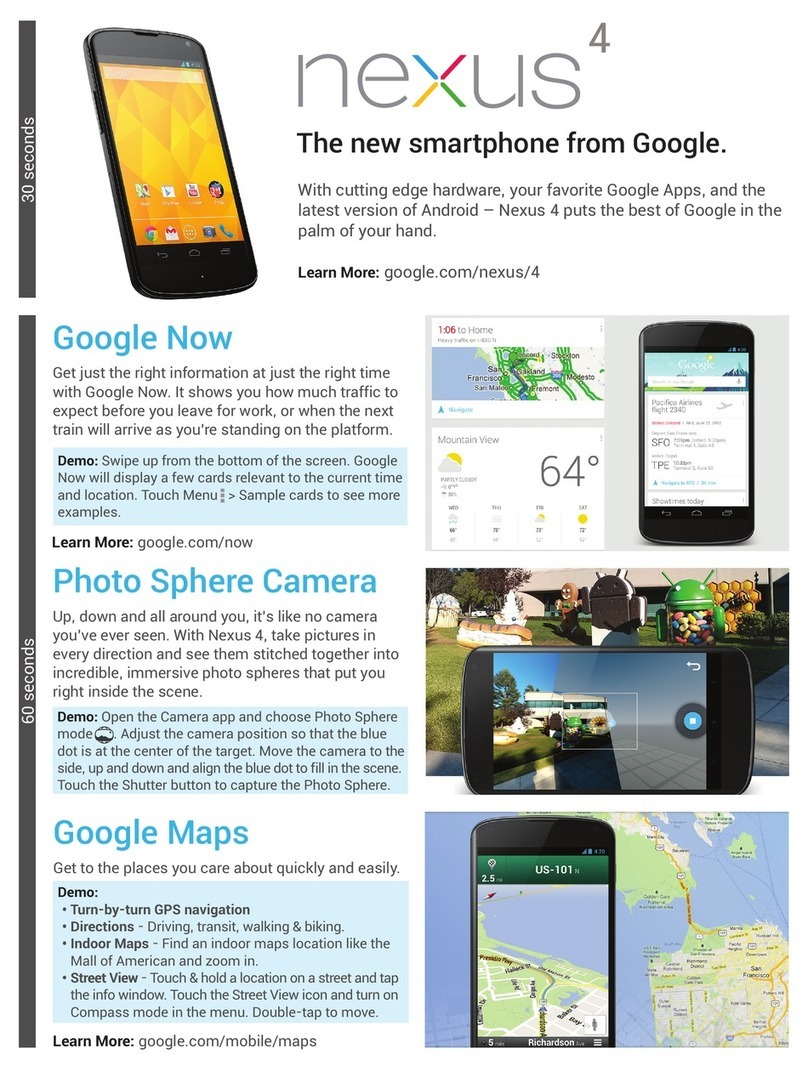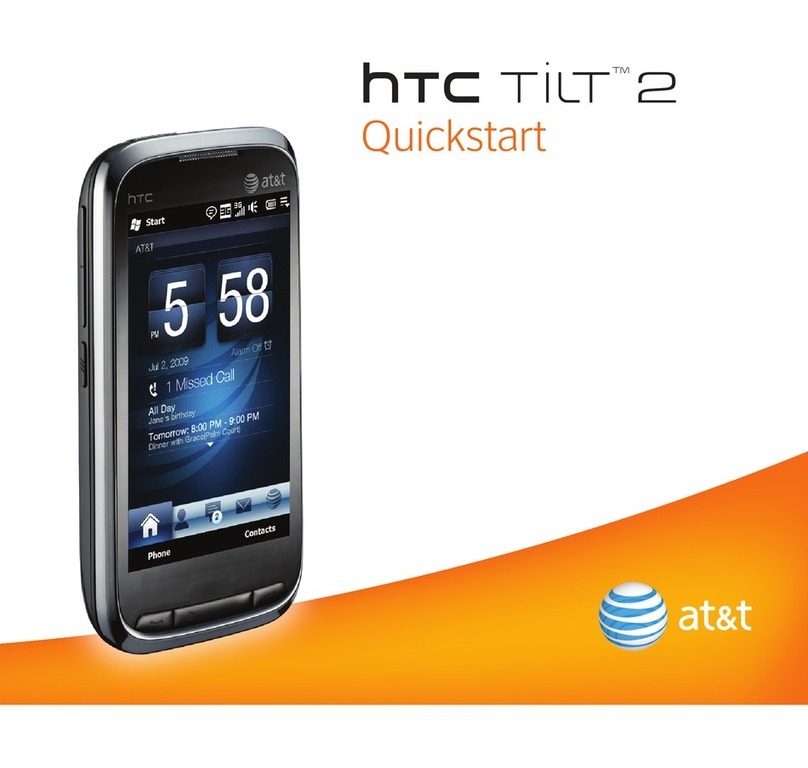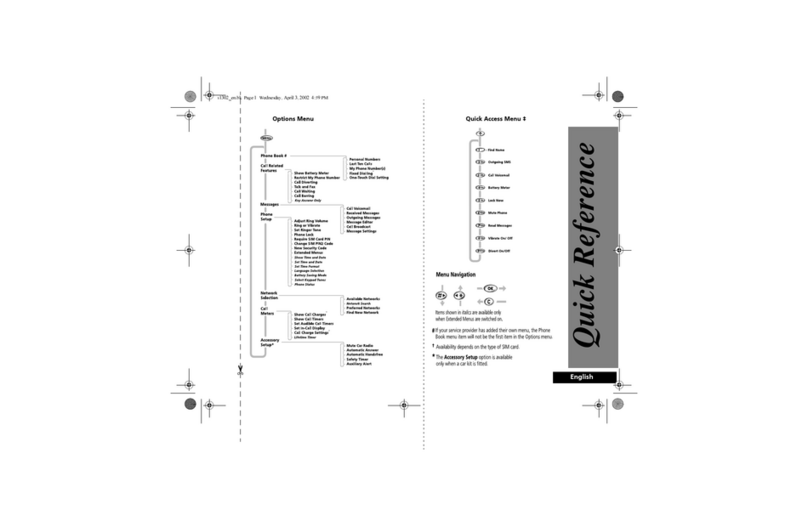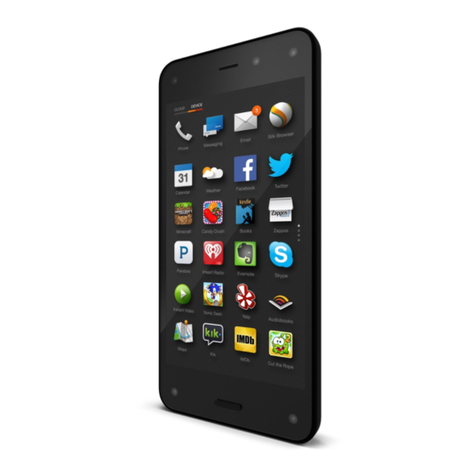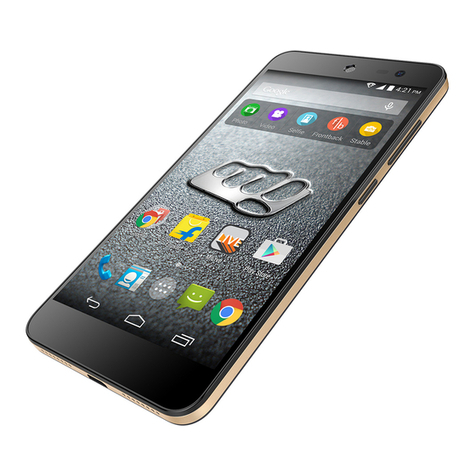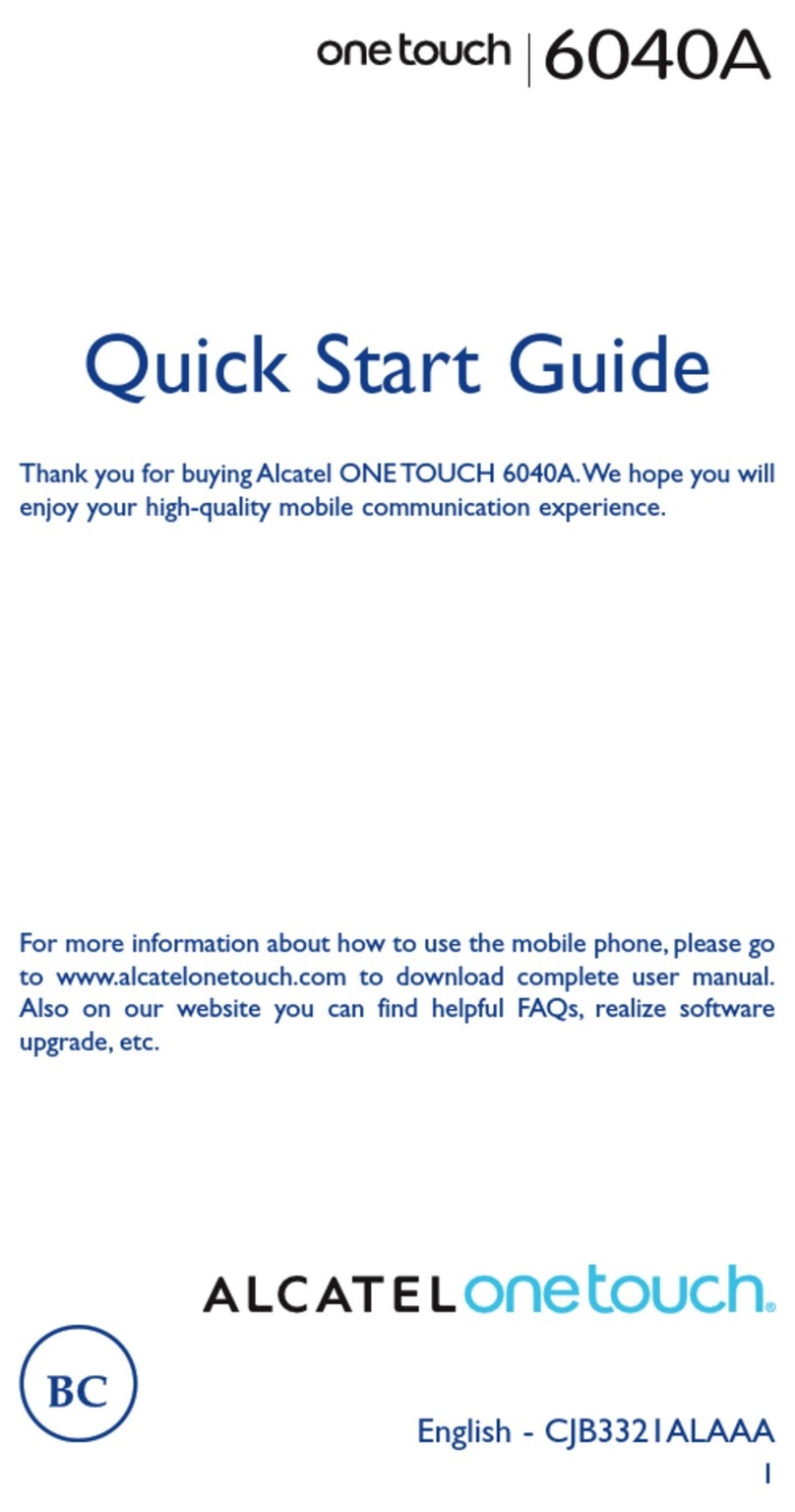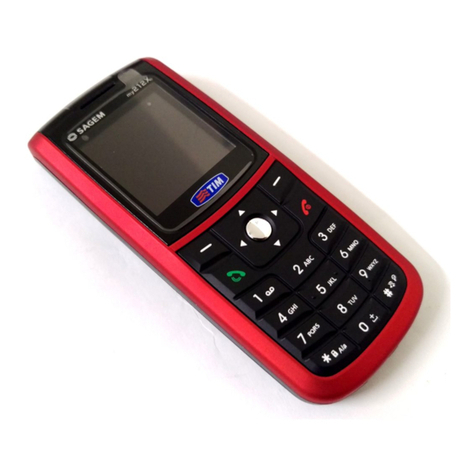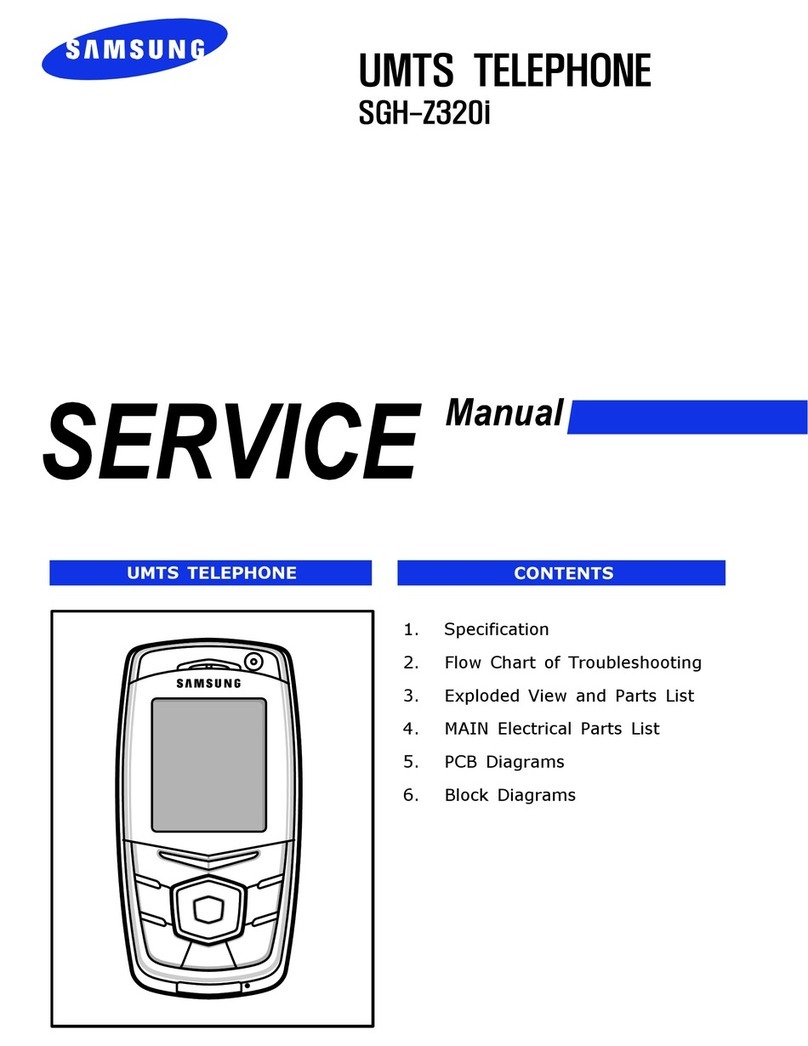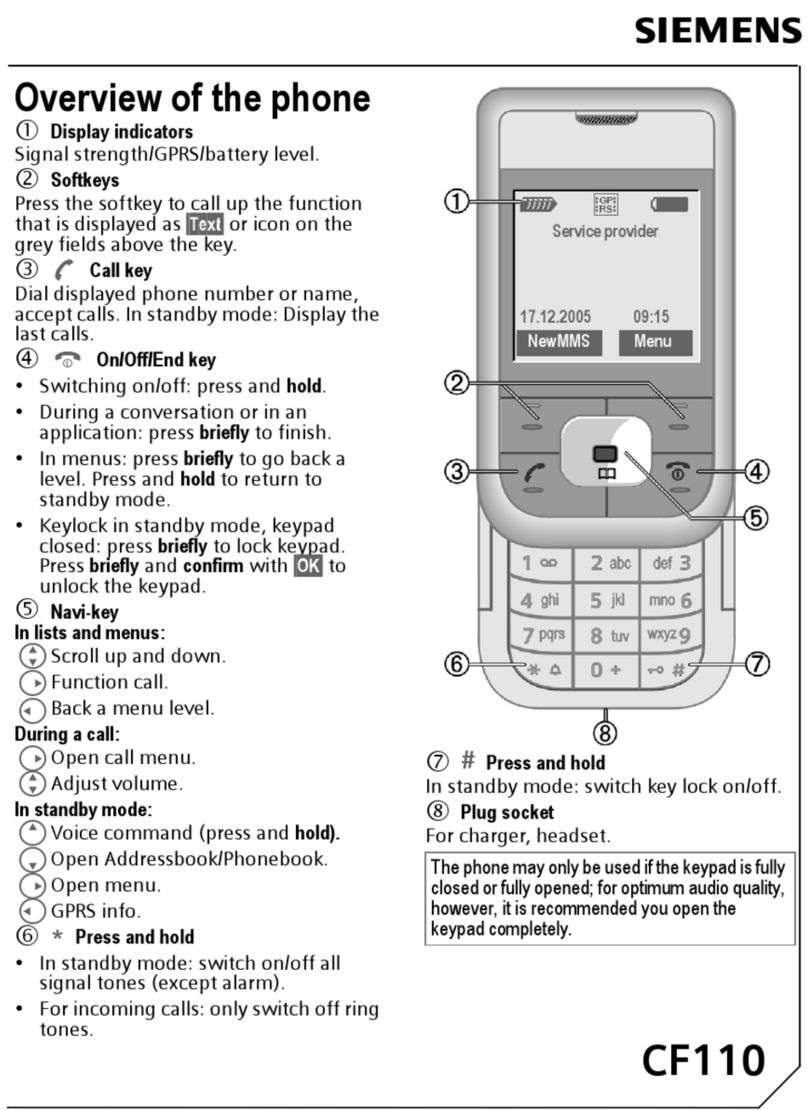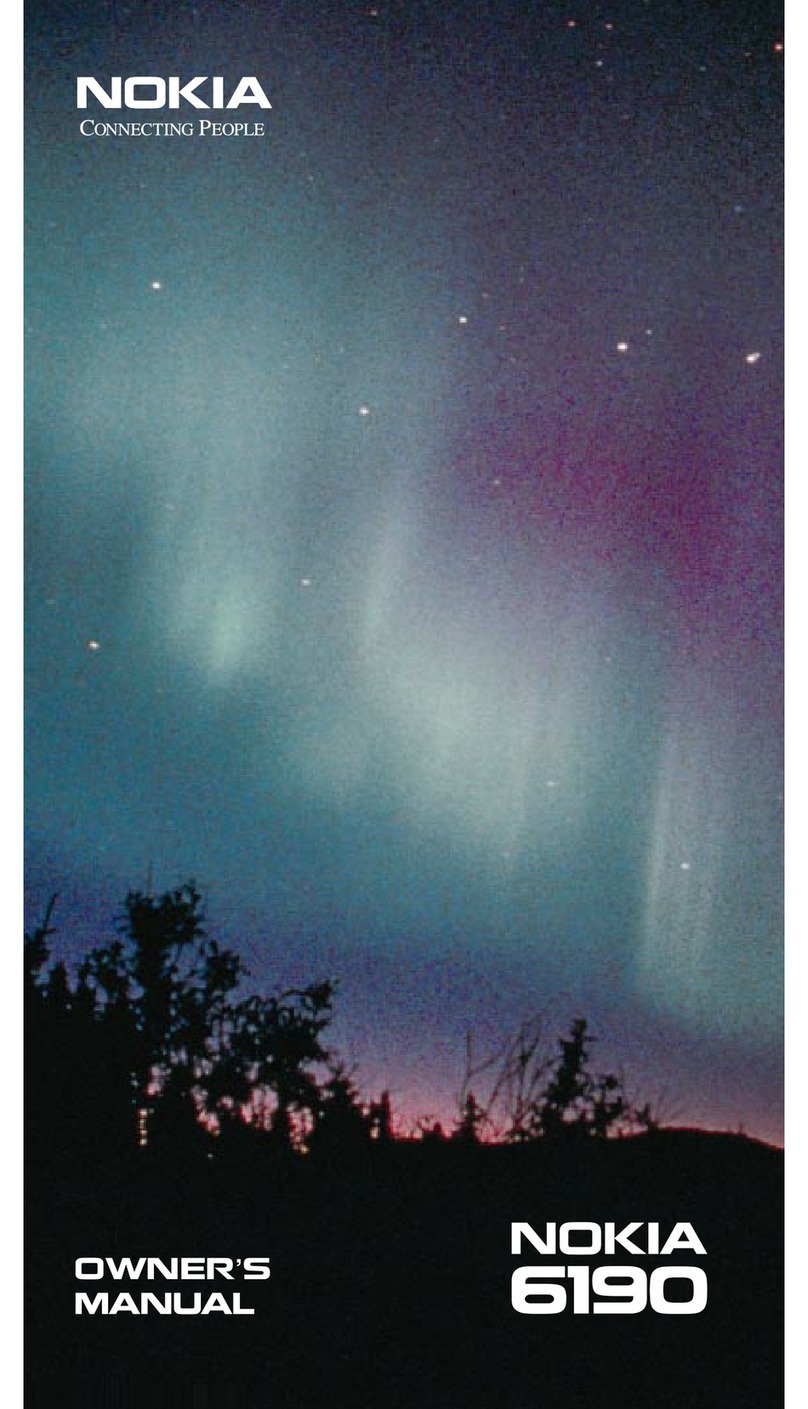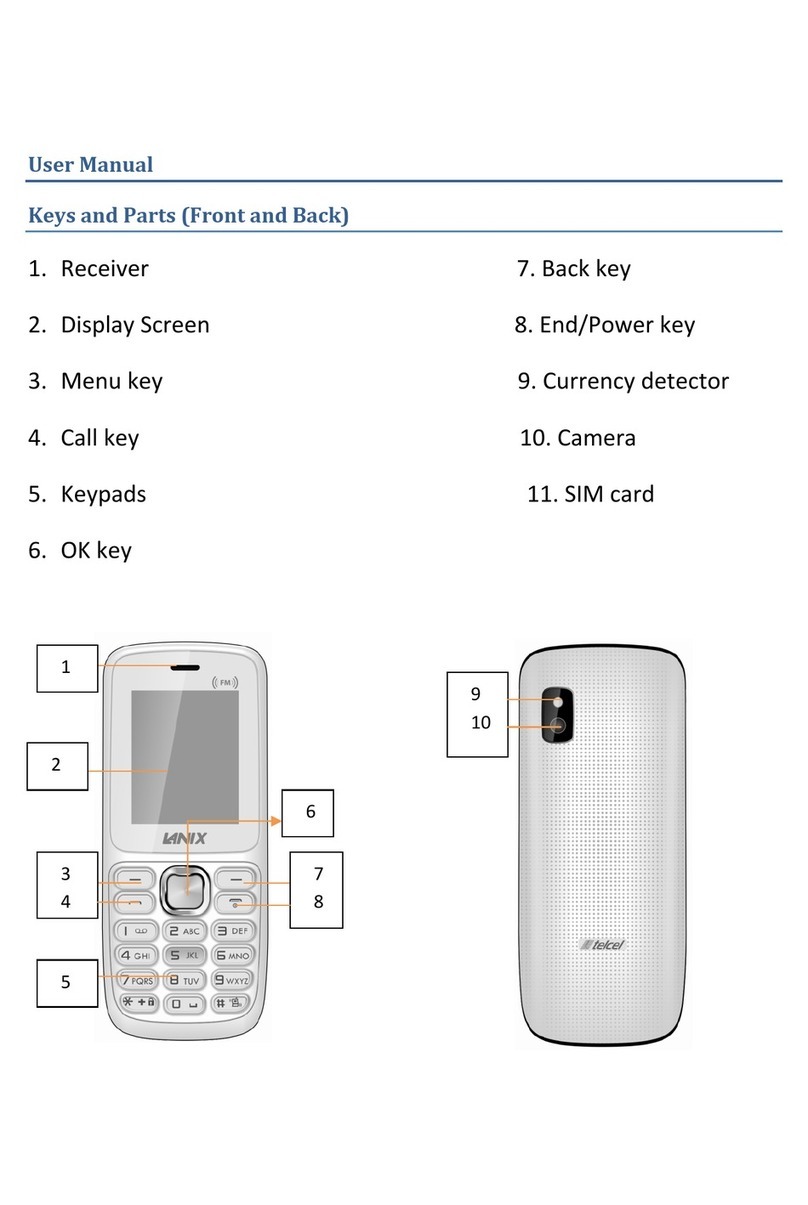Newgen Z400 User manual

ServiceManualV1.1 Newgen Telecom GSM Engineering
Copyright ©NEWGEN TELECOM Co. Ltd. Page 1
Service Manual
Z400
GPRS 900/1800
Copyright
©
NEWGEN TELECOM. This material, including documentation and any related computer
programs, is protected by copyright controlled by NEWGENT TELECOM. All Rights reserved.
Written permission from NEWGEN TELECOM is required for copying, adapting, or any kinds of
reproducing any or all part of this document.

ServiceManualV1.1 Newgen Telecom GSM Engineering
Copyright ©NEWGEN TELECOM Co. Ltd. Page 2
Revision History
Version Date Author Status Remarks
0.1 Oct30, 2003 Robert Kim Draft Initial Draft
1.0 Mar31, 2004 Robert Kim Official 1st Release
1.1 July 14, 2004 Sylvester Lee Official New function added

ServiceManualV1.1 Newgen Telecom GSM Engineering
Copyright ©NEWGEN TELECOM Co. Ltd. Page 3
Table of Contents
Revision History............................................................................................................................................. 2
1. Introduction ............................................................................................................................................................. 4
2. Product Description ................................................................................................................................................ 4
2-1. Features Set........................................................................................................................................................ 4
2-2. Minimum Radio Performance ........................................................................................................................ 5
2-4. General Description of Each Functional Block ............................................................................................. 7
2-4-1. Antenna (or briefly ANT)..................................................................................................................... 7
2-4-2. Antenna Switch Module (or simply ASM module; U104)............................................................... 7
2-4-3. SAW Band pass Filter (or, SAW BPF; F101, F102) ............................................................................ 7
2-4-4. Transceiver IC (CX74063; U101).......................................................................................................... 7
2-4-4-1. LNA Block................................................................................................................................... 8
2-4-4-2. Quadrature Demodulator ......................................................................................................... 8
2-4-4-3. Base band signal processing block (or, “base band block” in short)................................... 8
2-4-4-4. Control circuit............................................................................................................................. 8
2-4-4-5. Synthesizer block; ...................................................................................................................... 9
2-4-4-6. Power Amplifier (simply, PA; U102) ;................................................................................... 10
2-4-5. Analog Base-band IC + PMIC (SKY20524; U201); .......................................................................... 10
2-4-5-1. Earpiece/Melody Speaker/ Headset Interface;................................................................... 11
2-4-5-2. Power Management IC (or, simply PMIC; U201) ;.............................................................. 11
2-4-5-3. Internal Charger; ...................................................................................................................... 11
2-4-5-4. Real Time Clock (or, simply RTC); ........................................................................................ 11
2-4-6. Base and Processor IC (CX805-32; U301); ........................................................................................ 11

ServiceManualV1.1 Newgen Telecom GSM Engineering
Copyright ©NEWGEN TELECOM Co. Ltd. Page 4
1. Introduction
This document titled “Service Manual” is intended to serve as a technical guideline for repairing the GSM
cellular phone (Model: Z400) when in trouble. In order to troubleshoot a phone, service engineers or
technicians should know about basic knowledge on how the cellular phone is working and how it was
designed. According to symptoms of a problem, they should judge how to troubleshoot by taking proper
procedure. This service manual with other separate documents will provide such information. In this
document, the subject on system design, which is unique with Z400, will be discussed, and some
instructions for troubleshooting will be covered by “HW troubleshooting guide”. Of course, it’s impossible
to cover all kinds of problems and its solution in a document, but tried to introduce basic and proper
procedure for troubleshooting that can serve as a reference. Experienced service engineers or technicians
maybe have their own tricks or know-how regarding some specific problems, which are not discussed in
this material or other documents, and maybe theirs are more efficient and practical. Unless violate
recommended warnings or cautions, they can use theirs at their own risks but it’s highly recommended to
follow the guidelines suggested in this material if possible.
2. Product Description
Z400 is a “Dual-band Dual-mode GSM phone” that supports both E-GSM and DCS 1800 bands, and their
channel numbers (AFRCN) and operating frequencies are tabled at the end of this manual.
Z400 has many other features except basic phone operation, and can use some accessories with which C614
is used more conveniently and efficiently, and they will be discussed briefly hereafter since they are also
part of candidates that service engineers or technicians need to troubleshoot.
2-1. Features Set
. 65K Color TFT display for Main LCD (Pixel Size: xxx )
. 65k Color OLED display for Sub LCD (Pixel Size: xxx )
. 64-poly melody play through Stereo speaker
. Vibrator for etiquette mode
. Li-ion Battery (Capacity: 650 mAh) with protection circuit
. Headset for hands free (4-pole with SEND/END Key & Mic) *
. Blue LED Keypad backlight
. Travel Charger (TC)
. Internal Ant.
. SIM Card Interface that support 3V SIM cards (5V SIM is not supported)
. CMOS Camera Module (300K pixel resolution)
** Note: Other SW features are not included in the list, and you can refer to “User Manual” for detailed
features of Z400 regarding their usage.

ServiceManualV1.1 Newgen Telecom GSM Engineering
Copyright ©NEWGEN TELECOM Co. Ltd. Page 5
2-2. Minimum Radio Performance
The following table shows summarized electrical performance of Z400, which are required for phone
operation and also specified in GSM standards. Actual performance of Z400 surpasses minimum required
performance.
Standard Requirement
Parameters E-GSM DCS 1800
Remarks
Static Sensitivity
@ RBER < 2.4 % < - 107 dBm < - 105 dBm Typical
Tx Output Power + 33 dBm ±2 dB + 30 dBm ±2 dB
Tx Frequency Range 890.2 ~ 914.8 MHz 1710.2 ~ 1784.8 MHz
Rx Frequency Range 935.2 ~ 959.2 MHz 1805.2 ~ 1879.8 MHz
Power Class 4 1
No. of RF Channels 124 374
Duplex Frequency Offset 45 MHz 95 MHz
Duplex Time Offset 3 Time Slot 3 Time Slot
Channel Spacing 200 KHz 200 KHz
Modulation Type 0.3 GMSK 0.3 GMSK
Frequency Error < ±90 Hz < ±180 Hz
Phase Error Peak < 20 degrees
RMS < 5 degrees
Peak < 20 degrees
RMS < 5 degrees

ServiceManualV1.1 Newgen Telecom GSM Engineering
Copyright ©NEWGEN TELECOM Co. Ltd. Page 7
2-4. General Description of Each Functional Block
In this section, each functional block shown in the ”System block diagram” will be discussed one by one
briefly. When faced problems, understanding hardware design will be helpful for troubleshooting effectively.
2-4-1. Antenna (or briefly ANT)
ANT is a device that receives and transmits radio signals to communicate with base station nearby. Its type
is classified by its structure and implementation methods. Z400 is employing monopole type internal ANT
and fixed on top of the PCB. A phone user can’t see the ANT outside of phone. Its electrical performance is
determined by careful adjustment and optimization with ANT matching circuit on PCB board.
2-4-2. Antenna Switch Module (or simply ASM module; U104)
Since Z400 supports dual band operation (both E-GSM and DCS 1800) and each system is operating at
different frequency band, this device acts like a switch that controls the RF signal flow, that of in-band signal
received by ANT into two different LNAs and transmitting signals from dual band PA, so that it prevents
any out-of-band interference signals from interrupting proper operation at the selected band. Its switching
action is controlled by 2 control signals from “Analog Base band IC”, and named as “ CTL1 and CTL2”.
2-4-3. SAW Band pass Filter (or, SAW BPF; F101, F102)
In order to select desired signals (in-band signals) and reject undesired signals received by ANT, Z400 is
employing two SAW BPFs, with which each operating frequency band is covered, between ASM and
Transceiver IC. ASM has some amount of rejection for undesired signals but not sufficient for the phone to
meet the requirement specified in the standard, thus they were employed for better selection and rejection
performance.
2-4-4. Transceiver IC (CX74063; U101)
This IC provides a lot of functions required for the signal processing in RF band and base band related to
both modulation of received signal and demodulation for transmitting signal, such as “low noise
amplification by LNA block”, “ up/down conversion”, “ base band processing”, and “ frequency synthesis
for LO and Tx frequency generation” etc… All functional blocks are controlled by software with
sophisticated algorithms via multiple control signals grouped by and called “interfaces” (you can see many
interface group in the schematic). As both receiver and transmitter architecture, CX74063 is employing
“Direct Conversion” scheme, where IF stages are not required.

ServiceManualV1.1 Newgen Telecom GSM Engineering
Copyright ©NEWGEN TELECOM Co. Ltd. Page 8
CX74063 IC has 7 basic functional blocks required for
transceiver operation, which are as the following,
1. Three Low Noise Amplifiers (LNA)
2. Quadrature Demodulator
3. Base band signal processing block
4. Control logic circuitry governing whole
transceiver operation
5. Synthesizer block for local signal generation
(Fractional-N+TxTranslationLoop)
6. Quadrature Modulator
7. Two Tx VCOs
2-4-4-1. LNA Block
LNA block amplifies incoming signal from ANT so that the
signal level should be sufficiently high for demodulation
process. Though CX74063 is supporting “Tri-band” and
having 3 LNAs for each band, Z400 is only employing 2 of
them, LNA for E-GSM and LNA for DCS1800, in its design.
2-4-4-2. Quadrature Demodulator
(or, simply “quad-modulator”)
Since GSM is adapting “digital modulation” scheme called
“GMSK”, quadrature modulator is required for demodulation of received signal, where both “In-phase
signal” and “Quadrature phase signal” (or, shortly called I/Q signals) is split for digital signal processing at
base band processor (CX805-32) to extract information. Local signal from synthesizer block is fed into the
“quad-modulator” for down conversion of received RF signal to analog I/Q signals. (Later, this analog I/Q
signals is converted into digital signals at Analog BB IC, CX20524-13)
2-4-4-3. Base band signal processing block (or, “base band block” in short)
The down converted I/Q signals are filtered and amplified according to the signal strength at the ANT for
optimum signal level to be fed into successive functional blocks, and the amplifier gain is adjusted to
optimize the receiver performance so that the receiver has sufficient immunity in terms of interference
rejection performance.
2-4-4-4. Control circuit
GSM system is using Time Division Duplex (or simply TDD) schemes to separate receiver and transmitter
operation, thus it requires that whole circuitry should operate precisely in terms of timing, and control block
ControlPowergAnaloAPC =*
BlockBaseband
)(EGSM
LNA
)1800(DCS
LNA
÷
DOC
SupplyPower
LogicControl
&
)( NFractional
BlockrSynthesize
−
)30( KHzBW
VCOUHFforLPF
=
∆Σ
R
DFC
)1( MHzBW
VCOsTxforLPF
=
DFC )110( MHz
FilterIFTx
dulatorMo
Quadrature
Σ
θ
PD
2×
mixerharmonicsub −
1
D
÷
2D÷
dulatorDemo
Quadrature
θ
2×
APC
ICrTransceiveCX 74063
2×
θ
Fig 2 – Transceiver IC

ServiceManualV1.1 Newgen Telecom GSM Engineering
Copyright ©NEWGEN TELECOM Co. Ltd. Page 9
is taking charge of this function by providing complex control signals both internally and externally.
This block is also involved in proper parameter setting of internal block such as receiver I/Q filters, gain
stages, and synthesizer programming according to input signal level and operating channel for optimum
performance in various environment, and plays a linkage role between Analog BB IC through control lines
called “interface”.
2-4-4-5. Synthesizer block;
To generate the required local signal(LO) to receiver block and to make Tx signal GMSK modulated, a little
complicated process is undertaken as shown below
Fig 3 shows how transmitter frequency is generated, where 2 synthesizer loops are involved in, one is
“fractional-N PLL” for receiver LO signal
generation from UHF VCO and the other is
“Translation Loop” for direct modulation of Tx
VCOs. Depending on operation band, appropriate
divider (or multiplier) is selected to make accurate
frequency generation. Fractional-N PLL with UHF
VCO provides low phase noise and fast lock time,
which is required for multi-slot operation in
GSM/GPRS System. The Tx VCOs are directly
modulated by translation loop in which both UHF
VCO and I/Q signals from base-band are involved
to generate GMSK modulated RF signal. The
demodulated base-band signal is fed into Analog
Base-band IC for further signal processing.
In Fig.3, the “translation loop” is composed of a couple of sub blocks as the following;
Tx VCO -> Harmonic Mixer -> LPF -> Quadrature
Modulator -> BPF -> Divider (D1 or D2) -> Phase
Detector -> Loop Filter -> Tx VCO,
And the signal directly from UHF VCO acts like a
reference signal in a normal PLL loop.
Tx I/Q signals from base-band is quadrature
modulated with mixing product between UHF VCO
and Tx VCO, which is 100.267 MHz in GSM band
and 102.812 MHz in DCS1800 band, and compared
with reference signal to generate modulating signal
for Tx VCOs. For receiver LO signal generation,
only UHF VCO is used as shown in Fig.4., where
Tx VCOs
NFractional−
3÷
2×
θ
+
θ
2×
PD
2
D
÷ITx
QTx
1
D
÷
Fig 3 – Transmitter Frequency Generation
UHF VCO
θ
2×
θ
2×
NFractional
−
3÷
2×
LNA
GSM 900
LNA
DCS1800
SW
ANT
Mixer
Harmonic
Mixer
H
armonic
BBTo
Fig 4 – Receiver Frequency Generation
UHF VCO

ServiceManualV1.1 Newgen Telecom GSM Engineering
Copyright ©NEWGEN TELECOM Co. Ltd. Page 10
UHF VCO is divided by 3 in GSM900 band operation, and multiplied by 2 after division by 3 for DCS 1800
band operation. The quadrature demodulator is realized by sub-harmonic mixer that requires 1/2 the
received RF frequency from ANT, this helps
preventing LO leakage to ANT port that is well
known problem in a receiver employing direct
conversion architecture.
2-4-4-6. Power Amplifier (simply, PA; U102) ;
In Fig.5, there are 2 power amplifiers were
employed in Z400 design to support both GSM
and DCS band operation. GMSK modulated Tx
VCOs are input to each PA according to the
operating band of interest, and APC(Analog
Power Control) circuit inside CX74063
Transceiver IC controls PA operation in terms of band selection and ramp control in burst mode. In order to
control the PA properly, part of output signal from each PA is coupled by directional coupler and is
regulated to the corresponding DC voltage through “power detector” as shown in the Fig. 5, and properly
controlled transmitting signals (both power level and burst timing) are fed into ANT via ASM module.
2-4-5. Analog Base-band IC + PMIC (SKY20524; U201);
Analog Base band IC includes required
signal processing blocks for both receiver
and transmitter in base band domain,
such as digitizing received analog I/Q
signal from receiver block in transceiver
IC and making analog I/Q signal from
digital I/Q data from base band processor
for transmitter, and except basic signal
processing blocks, power management
function is integrated onto the same IC,
which provides DC voltage supplies for
various functional blocks.
In addition, there’s a couple of interface
circuitries for peripheral devices such as
earpiece (or receiver speaker), melody
speaker, headset, MIC, SIM card interface,
SW
RT /
BS
2CTL1CTL
)77321(CXPA
Coupler
lDirectiona
Detector
Power
.Con
RF Module
SwitchANT
D
F
C
AN
T
A
P
C
AP
C
BBgAnalofrom
signalcontrol
Fi
g
.5 – Power Am
p
lifier Block
+ADC
+ADC
DC
nterfacei
Serial
.
'2
Comp
s
DAC
Modulator
Codec
Audio
DAC
ADC
X
U
M
Tune
Generator
Clock
Interface
Serial
MonitorStatus
SequencerFrame
DAC
GPO
SequencerBurst
SequencerRamp
CCXO
MHz5.19
.
&
efRBandgap
LDOsSystem
Internal
RTC
erCh
&
arg nterfaceiSIM
nterfaceiSerial
dulatormoTo
SequencerBurstFrom
Ion
Li
Battery
cardSIM
rgerCha
.BattCoin
eceiverR
rSpeake
Melody
Headset
MIC
765YMU
ICYamaha
Drivers
Audio
.
'2
Comp
s
TRPass
DAC
Fig.6 – Analog Baseband + PMIC

ServiceManualV1.1 Newgen Telecom GSM Engineering
Copyright ©NEWGEN TELECOM Co. Ltd. Page 11
internal charging circuit, and coin battery for “real time clock (simply, RTC) as shown in Fig.6.
2-4-5-1. Earpiece/Melody Speaker/ Headset Interface;
Earpiece, or receiver speaker, is providing voice signal that a phone user wants to hear during a call, while
melody speaker is used only for melody sound playing (64 poly phonic sound). The reason why employed
separate speaker is that a phone user usually listens voice signal in normal phone operating position, making
the phone close to the listener’s ear after flip open, while melody playing is performed under flip closed
condition to show off to a friend or other people. Headset is recently used as a means of hands free device, or
for privacy during a call, and Z400 is providing required interface for dedicated headset device that has 4-
pole plug design (for detailed operation, refer to HW troubleshooting guide, where you also can see a photo
of headset)
2-4-5-2. Power Management IC (or, simply PMIC; U201) ;
Though this block is not clearly seen in the Fig.6, PMIC takes charge of very important role, which is
generating various DC voltages for each functional block. Some of them may need to be turned ON/OFF
according to the predetermined timing sequence (please note that GSM is TDD system in its operation).
Z400 is utilizing 6 different DC supplies from PMIC block, and refer to “power distribution chart” for
detailed information. You will probably understand later that the knowledge on these supply lines will be
very helpful for troubleshooting purposes because many cases of problems are closely related to DC supply
failure.
2-4-5-3. Internal Charger;
Analog BB IC has a circuitry for charging a battery, which is called “internal charger”, with the help of travel
charger (or, simply TC). Actually, TC is not a charger but a constant DC voltage supplier and internal
charger circuitry is playing a role of charging a battery. This circuit is composed of “pass Transistor” (p-
channel MOSFET), and current sensing resistor, and control block that is integrated onto the IC internally.
It controls the gate bias voltage of the pass TR with the help of SW, and adjusts charging voltage and current
according to different battery type. Detailed structure of the charging circuitry will be covered in “HW
troubleshooting guide” later.
2-4-5-4. Real Time Clock (or, simply RTC);
RTC is a functional block that manages time and date information as is with a time watch or time clock to a
phone user, and it operates independently from other blocks with independent DC supply called “coin
battery”, and can operate even without battery for a given time. The 32.769 KHz crystal(X301) at base band
processor IC (U301) is mainly employed as reference signal source to count time. For detailed information,
refer to “HW troubleshooting guide”.
2-4-6. Base and Processor IC (CX805-32; U301);
Base band processor IC acts as brain for a human, it commands, controls, monitors, and performs signal
processing whole radio and it’s beyond the scope of this manual to cover detailed operation of the processor

ServiceManualV1.1 Newgen Telecom GSM Engineering
Copyright ©NEWGEN TELECOM Co. Ltd. Page 12
but brief structure is as shown in Fig. 7, where the main body is divided by two cores called “ARM core” and
“DSP core”. ARM core takes charge of controls and commands while DSP core does mainly signal
processing required for sophisticated phone operation specified in GSM standards. In addition, there’s a
couple of interfaces such as “keypad interface”, where
Key pressing or operation is scanned and monitored,
“back light interface”, which is related to keypad back
lighting, “ringer and alert interface”, which is for
providing audio signals to a phone user during a call,
“ memory interface”, which is for communication with
flash memory where SW and other useful data are
stored, and “system connector interface”, which is for
communication with external devices such as data
cable to a computer, and other functions.
32.769 KHz crystal is connected to this IC to provide
reference signal source for RTC block.
CoreARM7
CoreDSP
RTC
KHz32
Memory
Flash
Connector
System
Clock
System
Keypad
BackLight
Alert
Ringer
Fig.7 – Base band Processor (CX805-32)
Table of contents
Other Newgen Cell Phone manuals
